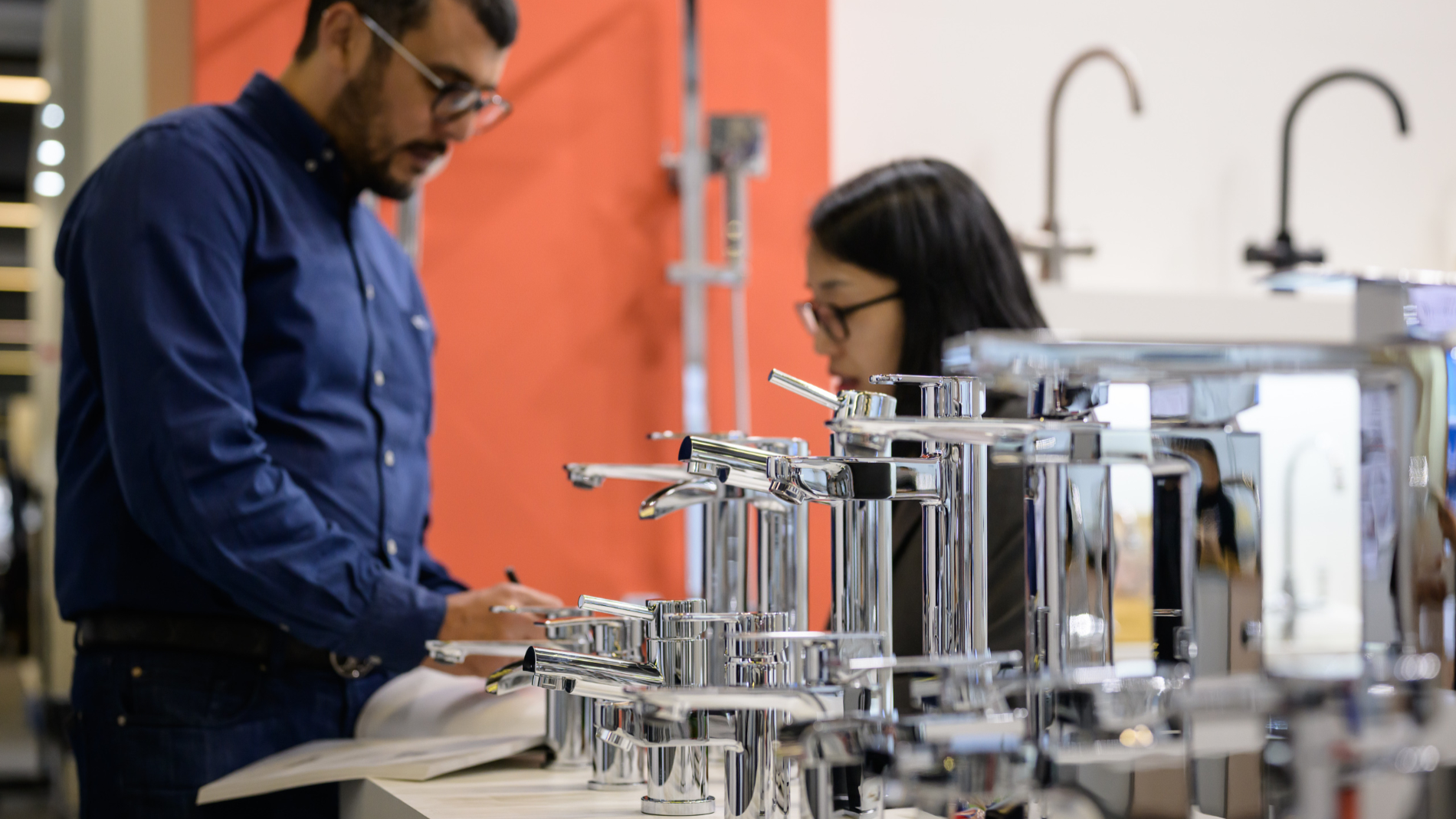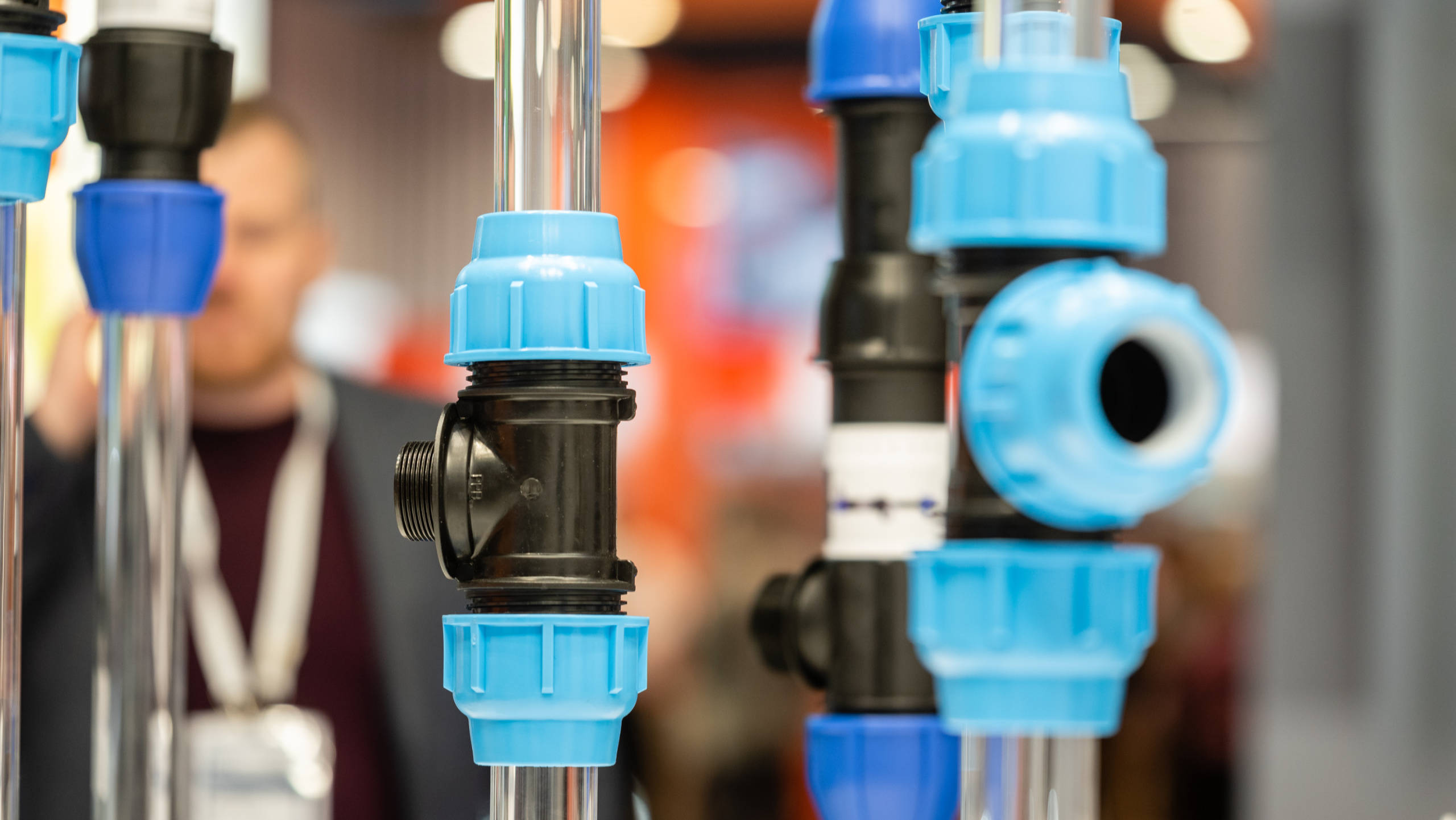Material and technology trends for sanitary systems

Sanitary-product manufacturers face numerous challenges: they must meet increasing demands for greater efficiency and sustainability, at the same time as take account of hygiene requirements. On top of this are the aesthetic expectations of customers. At ISH 2025, many exhibitors will show how this balancing act can be mastered with the help of high-quality components and materials for sanitary products.
Water-saving mechanisms: using a scarce resource efficiently
Reducing water consumption is a key factor for sanitary technology. Today, water-saving mechanisms are a must if the ecological footprint is to be minimised and water consumption in households and commercial facilities reduced:
- Intelligent restrictors and aerodynamic nozzles regulate the water flow of water from taps, shower heads and other fittings in accordance with individual requirements – in real time and without any compromise in terms of comfort or convenience.
- Highly efficient flushing technologies, such as dual-chamber systems or air flushes, ensure the toilet is flushed thoroughly while minimising water consumption.
- Adaptive, sensor-based control systems use usage data to optimise the flow of water and thus help save water.
- Modern grey-water recycling systems treat water from washbasins, showers and bathtubs by means of membrane bioreactors, UV technology or other processes and redirect it for toilet flushing or irrigation.
Seals and valves: precise control and regulation
The quality and precision of seals and valves is essential for regulating the flow of water in sanitary systems. The latest material and design innovations improve both the reliability and durability of such components:
- Fibre-reinforced and ceramic seals are gaining in popularity because they do not deform as easily and therefore guarantee better long-term sealing performance.
- Robust elastomers, such as ethylene propylene diene monomer (EPDM) and fluorine rubber (FKM), are also frequently used in seals, as they effectively prevent leaks and extend the service life of seals thanks to their high chemical and thermal resistance.
- Special nickel-based alloys provide valves with excellent corrosion resistance in harsh environments and thus minimise maintenance requirements.
- Teflon-based PTFE coatings reliably ensure the functionality of valves even in environments exposed to aggressive chemicals.
- Sensors and microprocessors make valves intelligent. Integrated into IoT systems, intelligent valves monitor the water flow in real time, detect leaks and optimise the water flow in line with the current situation.
High-quality materials for sanitary products
Material selection is crucial for the durability and hygiene of sanitary products. The most popular materials for sanitary products reflect the growing expectations on hygiene, durability and sustainability by reducing the time and effort required for cleaning.
- Stainless-steel alloys, such as AISI 316 (V4A), are resistant to chlorides and impress with their long service life, even in aggressive environments such as swimming pools.
- High-performance ceramics are becoming increasingly important thanks to their great hardness, scratch resistance and chemical resistance. Ceramic materials such as zirconium oxide are used primarily for surfaces subject to heavy usage, e.g., washbasins and toilets.
- Fibre-reinforced plastics, especially fibre-glass reinforced plastics (GRP), combine the lightness of plastics with the strength of glass fibres.
- Antibacterial and antimicrobial coatings, many of which contain silver ions or copper, contribute to a hygienic sanitary environment.
Fittings: perfection in design and function
Sanitary fittings should not only be functional, they should also be aesthetically pleasing. New design trends and technologies improve user experience and help save water:
- Ergonomic and modern fitting designs combine aesthetics with functionality.
- Fittings with integrated water-saving mechanisms can significantly reduce water consumption.
- Touchless, sensor-activated fittings control the flow of water as required and promote hygiene, especially in public facilities and non-residential buildings.
- IoT-enabled smart fittings can be integrated into the central building-management system and controlled and monitored in real time – including remotely.
Visit ISH 2025 and gain a comprehensive overview of the innovative solutions and trends in the field of sanitary technology. Raise your sanitary products to an even higher level.
